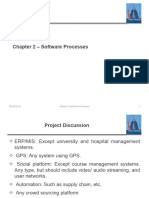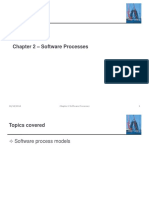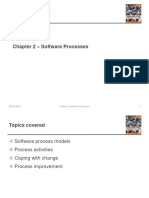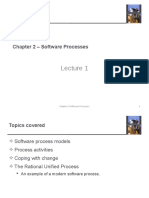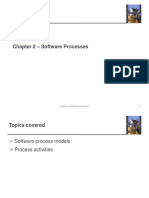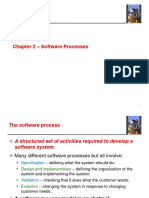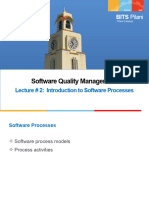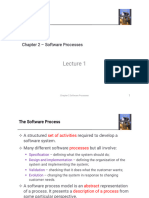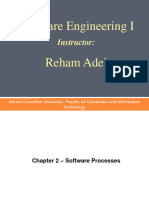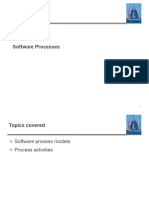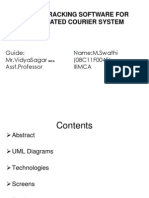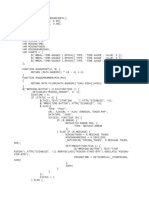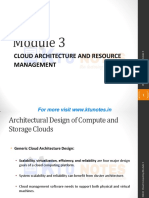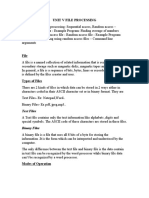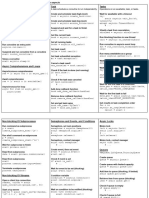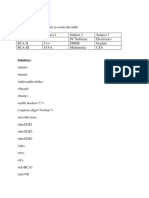0% found this document useful (0 votes)
46 views34 pagesCh2 SW Processes and Models
The document discusses different software development processes and activities. It covers process models like waterfall, incremental development, and reuse-oriented processes. The key activities discussed are specification, design, implementation, and validation. It describes requirements engineering, design, implementation, and testing as important process activities. Different process models organize these activities sequentially or iteratively in varying ways.
Uploaded by
WAAD IBRACopyright
© © All Rights Reserved
We take content rights seriously. If you suspect this is your content, claim it here.
Available Formats
Download as PPTX, PDF, TXT or read online on Scribd
0% found this document useful (0 votes)
46 views34 pagesCh2 SW Processes and Models
The document discusses different software development processes and activities. It covers process models like waterfall, incremental development, and reuse-oriented processes. The key activities discussed are specification, design, implementation, and validation. It describes requirements engineering, design, implementation, and testing as important process activities. Different process models organize these activities sequentially or iteratively in varying ways.
Uploaded by
WAAD IBRACopyright
© © All Rights Reserved
We take content rights seriously. If you suspect this is your content, claim it here.
Available Formats
Download as PPTX, PDF, TXT or read online on Scribd
/ 34






